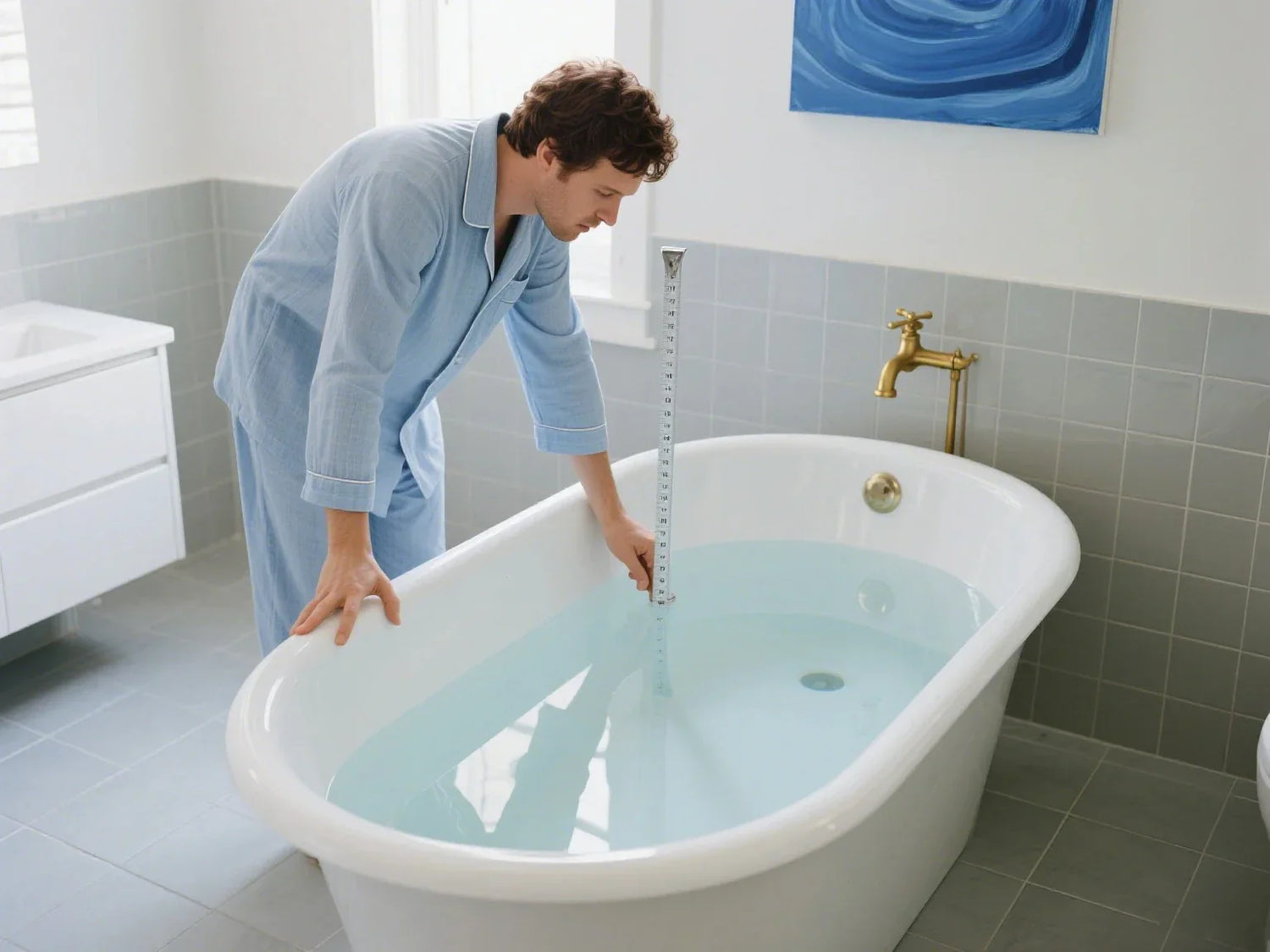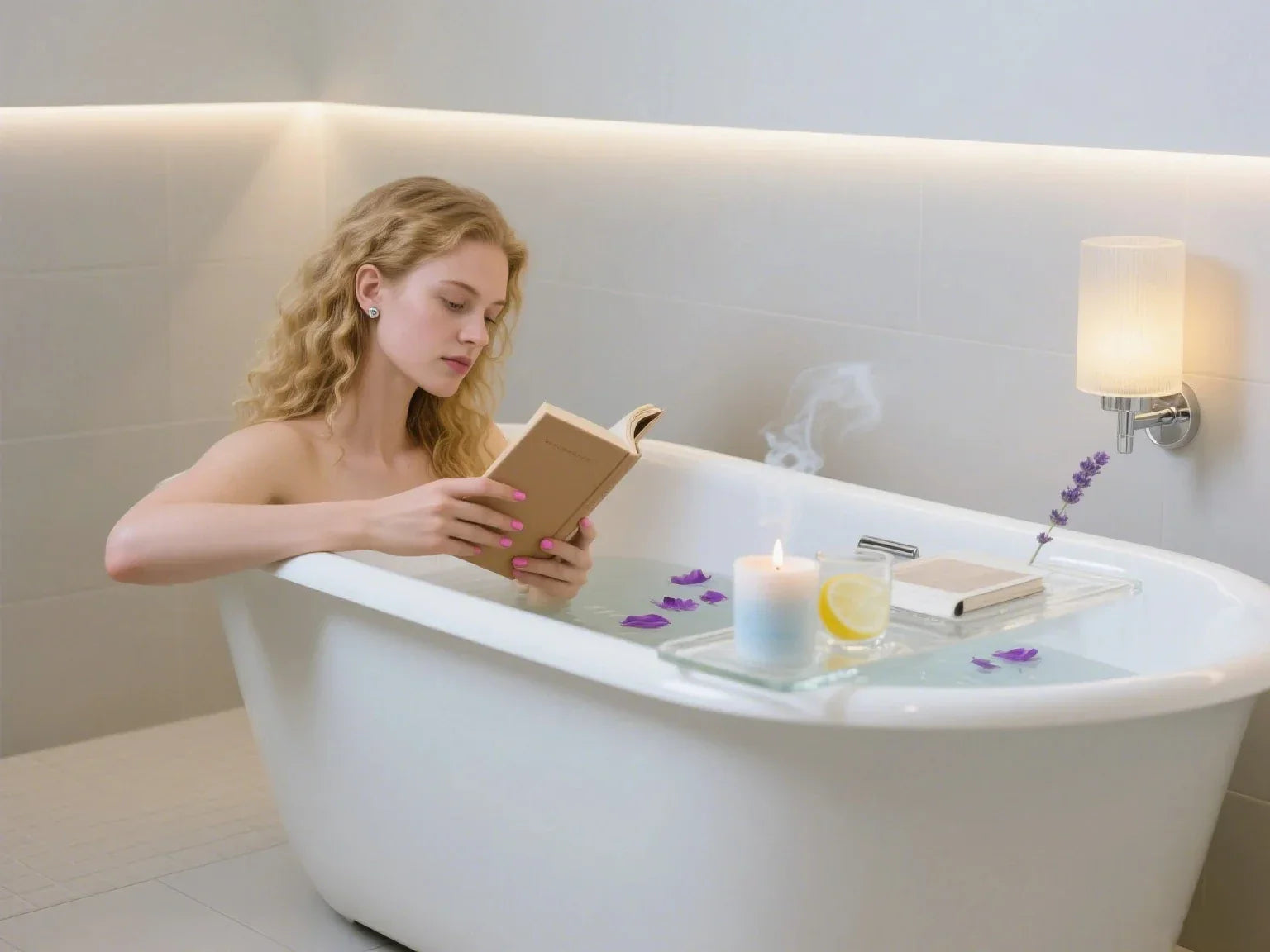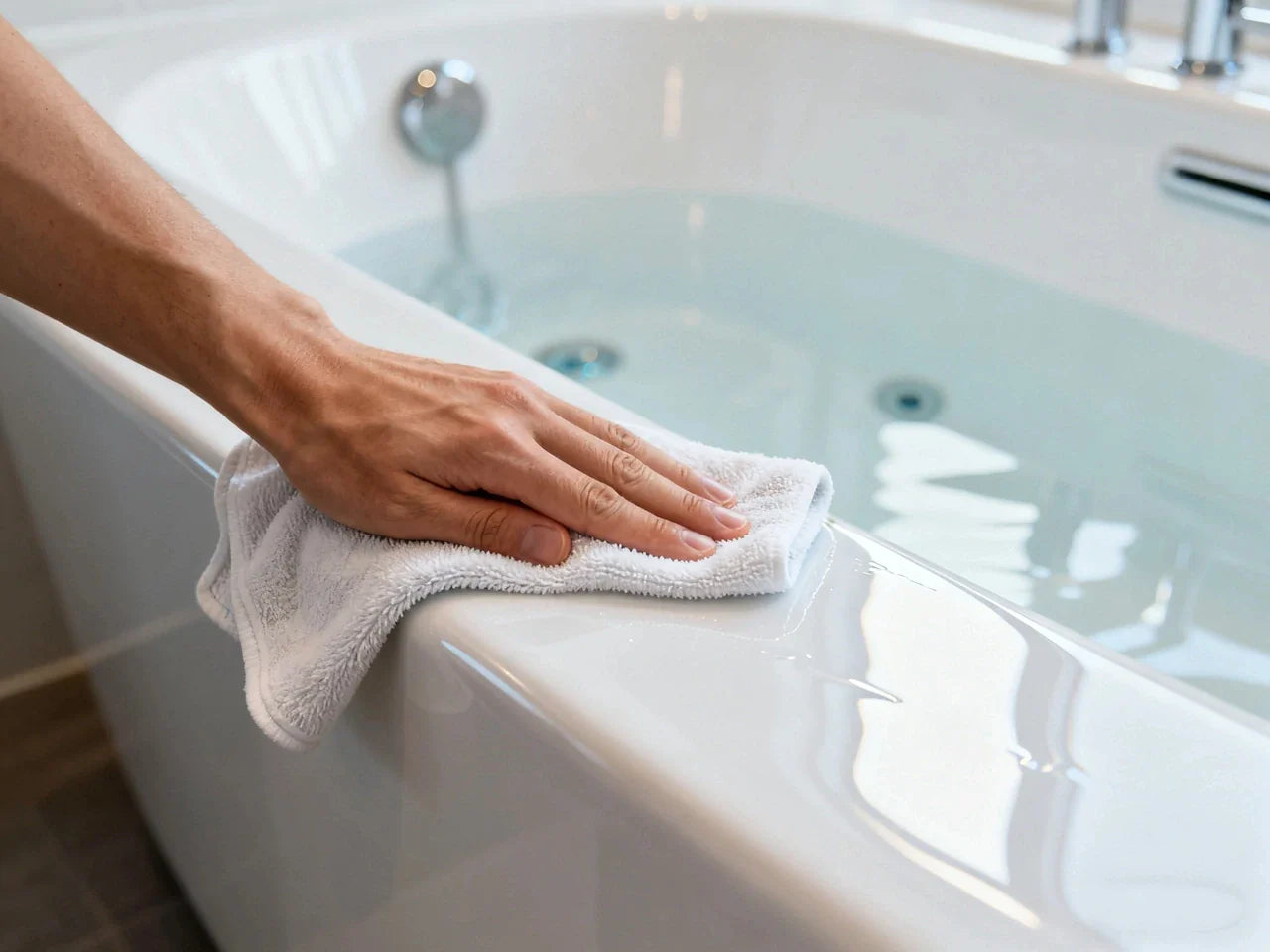How Many Gallons in a Bathtub
Standard tub gallons at a glance
- Most standard or alcove bathtubs, which typically reflect the average tub size, hold between 40–70 gallons at maximum, with 50–60 gallons being the typical water usage in many households.
- A common 5-foot tub: about 65 gallons when filled to the overflow (theoretical max).
- In real life: People usually bathe with 10–20% less than the listed max because of water displacement and stopping short of the overflow.
Small, large, and specialty bathtub capacity
Small Bathtubs: Small bathtubs are typically designed for compact spaces and generally hold around 40 gallons (or less). These tubs are often seen in bathrooms with limited space or used for children's baths. The water capacity of your bathtub will be much smaller than bathing tub standard size, which is important to note when planning for water usage. These small tubs hold different amounts of water depending on their exact dimensions, but they are usually a practical choice for a household bathtub in a tight space.
Large/luxury tubs(soaker, freestanding, two-person): Large or luxury tubs, such as soaker tubs, freestanding tubs, and two-person models, typically hold between 80–170+ gallons of water. These tubs are often deeper and larger than standard bathtubs, offering a more luxurious bathing experience.
Corner tubs: Corner tubs are an excellent space-saving option, designed to fit snugly in the corner of your bathroom. They typically hold around 40–60 gallons of water, offering enough space for a comfortable soak while maximizing the available space in smaller bathrooms. Since these tubs are generally shallower than other types, the amount of water they may hold is lower than larger models.
Two-person/garden tubs: typically 100–170+ gallons. Always confirm the exact model.
Usable vs. maximum volume (what you’ll actually bathe in)
The listed capacity assumes filling to the overflow. Once someone gets in, displacement pushes water up, so the usable amount of water is often 10–20% less. This is important when comparing different sizes of the bathtub, as larger tubs may allow for more displacement and require more water.
Practical tip: Stop 1–2 inches below the overflow to reduce splash and waste.
Safety note: Filling above the overflow is risky; the moment you enter, water can spill out.

Bathtub capacity table: how many gallons does a bathtub hold
Bathtub type vs. average capacity (maximum, before displacement)
| Bathtub Type | Typical Max Capacity (Gallons) | Typical Max Capacity (Liters) |
| Small/Compact | ~40 | ~150 |
| Standard/Alcove | 40–70 | ~150–260 |
| Tub-Shower Combo | 60–80 | ~230–300 |
| Freestanding (1-person) | 60–100 | ~230–380 |
| Soaker (deep) | 80–130+ | ~300–490+ |
| Corner | 40–60 | ~150–230 |
| Walk-In | 40–80 | ~150–300 |
| Two-Person/Garden | 100–170+ | ~380–650+ |
Quick reference: showers vs. baths (typical scenarios)
| Activity | Rate/Fill | Time/Fill | Approx. Gallons Used |
| Shower (standard head) | 2.5 gpm | 10 min | ~25 |
| Shower (WaterSense) | ≤2.0 gpm | 10 min | ~20 |
| Shower (low-flow) | 1.5 gpm | 10 min | ~15 |
| Standard bath (practical) | Partial fill | — | ~50–60 |
| Soaker bath (practical) | Deeper partial fill | — | ~60–80 |
Estimating gallons from size (examples at a moderate fill line)
| Interior L × W × Avg Depth (in) | Box Volume (gal) | Realistic Estimate (×0.8) | Likely Practical Use After Entry |
| 60 × 30 × 10 | 77.9 | ~62 | ~45–55 |
| 60 × 30 × 12 | 93.5 | ~75 | ~50–65 |
| 66 × 32 × 14 | 128.2 | ~102 | ~70–85 |
| 72 × 36 × 16 | 179.2 | ~143 | ~95–120 |
How many gallons of water in your bathtub: simple methods
Use this volume formula
Quick math: Length (in) × Width (in) × Average water depth (in) ÷ 231 = gallons
231 cubic inches = 1 U.S. gallon (standard conversion).
Adjust for real use: Multiply your result by 0.8–0.9 to account for the space below the overflow and the tub’s curves. After you get in, displacement will reduce the actual bathwater volume further.
Example (standard 60-inch tub, moderate fill):
- Interior fill plan: 60 in × 30 in × 12 in = 21,600 cubic inches
- 21,600 ÷ 231 ≈ 93.5 gallons (theoretical, box-shaped)
- Realistic (curves/overflow): 93.5 × 0.8 ≈ 75 gallons
After you get in, practical water used is often 50–65 gallons for typical soaks
Where to measure: length, width, water depth
- Measure inside the tub at the waterline you plan to use: The outer rim can be misleading, as the actual volume of water depends on how high you fill the tub. The typical bathtub will often be filled to a comfortable level slightly below the overflow to prevent spills, and this is where you should measure to get an accurate estimate of how much water the tub can hold.
- Average water depth: Measure from the tub floor to a point 1–2 inches below the overflow cover. This accounts for the portion of the tub that won't be filled to prevent spillage. Depending on the type of bathtub, the depth can vary significantly, with deeper tubs able to hold more water than standard models.
- Sloped/curved tubs: To measure it accurately, take two readings: one at the deepest point and one at the shallowest. Then, add these values together and divide by 2 to find the average depth. This is particularly important because these measurements can vary depending on the design of the tub. Some designs, like freestanding tubs or corner tubs, may have more varied depths, which can affect the total volume of water they are able to hold.
How can I measure gallons in my bathtub without math?
- Bucket method: Start by filling your tub to your typical waterline and use a 1-gallon container (or another container with a known size) to count how many pours it takes to reach that level. This method gives you a quick estimate of how much water your tub uses in a typical bath. For those looking to practice water conservation, this method can also help you see if you're using more water than necessary—perhaps prompting you to adjust your fill line and reduce overall water use.
- Meter method: For a more advanced method, many homes now have smart water meters or sub-meters that can easily track water usage. Simply check the meter reading before filling your tub and again after filling it. This will show you exactly how many gallons of water in your tub you are using. This method is also a great way to keep track of your water conservation efforts and monitor your household's water usage more effectively.
- Scale method: To measure how many gallons in a bathtub, you can use the scale method by weighing a bucket both empty and full. Since one gallon of water weighs around 8.34 lbs, you can calculate the total volume of water you’ve used by simply comparing the weight difference. By using this method, you'll have a more accurate picture of the water your tub holds, and you can make informed decisions about water conservation by adjusting your bath habits or fill line.

Bathtub sizes and gallons by type (bathtub capacity guide)
Standard alcove and tub-shower combos
- Standard alcove: 40–70 gallons; most homes see 50–60 gallons used.
- 5-foot tub: around 65 gallons at the overflow line.
- Tub-shower combos: commonly 60–80 gallons max; profiles vary a bit, and usable water depends on how high you fill it.
Freestanding, soaker, and clawfoot tubs
- Freestanding (single-person): roughly 60–100 gallons.
- Soaker tubs: often 80–130+ gallons; these are deeper, so they hold more water and weigh more when full.
- Clawfoot tubs: range widely by length and depth; many land near 60–100 gallons.
Corner, walk-in, and two-person bathtubs
- Corner tubs: usually hold 40 to 60 gallons; built to fit tight spaces.
- Walk-in tubs: many designs hold 40 to 80 gallons of water, but seating reduces the water needed per bather.
- Two-person/garden tubs: typically 100–170+ gallons; check floor support and water heater output.
Manufacturer range example (what you can expect)
- Across models on the market, you’ll see published capacities from roughly 40 gallons (compact/space-saving) up to ~170+ gallons (large soakers and two-person tubs).
- Always check the spec sheet for your exact model, including minimum water to fill for jets (if any) and the overflow location.

Real-world filling: how much water do people actually use?
Practical fill lines vs. overflow drains
- Most baths are taken at 60–90% of the theoretical maximum. Then, 10–20% of that can be “lost” in effect once you enter, because of displacement.
- Try this: Fill to a comfortable line below the overflow, step in, and note the new line. Use that as your future fill target.
- Daily reports from homeowners often land between 50 and 70 gallons for standard tubs in real use. Large tubs are rarely filled to the rim.
Case study: bath vs. shower water use (typical scenarios)
- Bath: A standard tub holds around 60 gallons at max, but many people bathe with less.
- Shower: A 10-minute shower at 2.5 gpm uses about 25 gallons. With a low-flow head at 1.5 gpm, it’s around 15 gallons. With WaterSense showerheads (≤2.0 gpm), a 10-minute shower uses about 20 gallons.
- For many households, a short shower often uses less water than a full bath.
Is a bath or a shower more water-efficient?
- Short showers with 2.0 gpm (or lower) showerheads usually beat baths for water savings.
- Take partial baths? At 40–50 gallons, the difference narrows. Your habits matter most.
- For families bathing children, one partially filled bath can be more efficient than multiple separate showers.
Cost, utilities, and eco impact of bath water
Estimate your cost to fill the tub
- Water cost: Gallons used × your water + sewer price per gallon (check your utility bill).
- Hot water energy: Estimate the hot water fraction of the bath and apply your energy rate (gas or electric) using your heater’s efficiency and temperature rise.
- Total bath cost: Water + sewer charges + energy to heat the hot portion.
- If you use 50 gallons per bath, multiply 50 × your rate per gallon for water/sewer.
- For heating, compare your hot water share (for many people, about half to two-thirds of the tub is hot water) against your heater’s output and energy price.
Water-saving tips without sacrificing comfort
- Lower your fill line: Many soaks feel great at 60–80% of the tub’s max.
- Pick efficient showers for non-soak days; WaterSense showerheads save gallons.
- Plug the drain first, then adjust the mix as it fills. This avoids sending hot water down the drain while waiting for perfect temperature.
- Use bath inserts or a smaller inner tub for kids to use less water.
- Keep baths short when possible to reduce heat loss and topping off.
How many gallons should I use for a relaxing soak?
- Many adults find 40–50 gallons is enough in a standard tub.
- In deeper soakers, 60–80 gallons can give full immersion.
- Stop below the overflow, and factor in displacement after you get in.
- Adding salts? A bit less water can keep concentration up and save gallons.

Planning, safety, and home constraints
Weight considerations: water + tub + person
- 60 gallons of water ≈ 500 lb, plus your body weight and the tub’s weight.
- Large soakers with 100–150 gallons add ~830–1,250 lb of water alone.
- Live in an older home or planning a big soaker? Ask a qualified pro to check floor support.
Hot water capacity: will my water heater keep up?
Before buying a new bathtub, it’s important to check how many gallons in a bathtub it holds, especially if you have a small water heater. Many storage water heaters are 40–50 gallons, but what counts is the first-hour rating and recovery rate. If you're considering a large tub (80–120 gallons), the water heater with a capacity of this size may struggle to keep up, as it can easily outpace your tank’s ability to provide hot water for the entire bath.
Options include:
- Staggered filling
- Higher first-hour rating tanks
- Tankless systems sized for baths
Check your heater’s first-hour rating and compare it to your typical bath volume.
Can I overfill above the overflow drain?
Special tubs and edge cases (bathtub water volume nuances)
Walk-in tubs and senior-friendly models
- Capacities often 40–80 gallons, depending on seat height and door design.
- Think about fill/drain time and how well the tub holds heat for comfort.
- Many walk-ins list exact gallons—check specs before buying.
Jetted and whirlpool tubs
- Capacity varies by size class—similar to soakers of the same footprint.
- Keep jets submerged to the minimum jet line to protect the pump.
- Maintenance matters: Clean jets and follow safety guidance. Pumps also add electric use to your water use.
Kids’ and petite tubs
- Kids’ baths are often 20–40 gallons or less.
- Bath inserts or a small inner tub can cut water use for young children.
- For infants, use dedicated baby tubs to save water and improve safety.
Actionable takeaways
- Standard tubs: 40–70 gallons; most homes use 50–60 gallons per bath in practice.
- Luxury/soaker/two-person: 80–170+ gallons; plan for weight and water heater capacity.
- Real baths use less than max: Expect 10–20% lower than listed capacity due to displacement and stopping below the overflow.
- Use the formula (L × W × average depth ÷ 231) to find the capacity of your bathtub at your preferred fill line, then compare to showers for water and cost savings.









Leave a comment
This site is protected by hCaptcha and the hCaptcha Privacy Policy and Terms of Service apply.